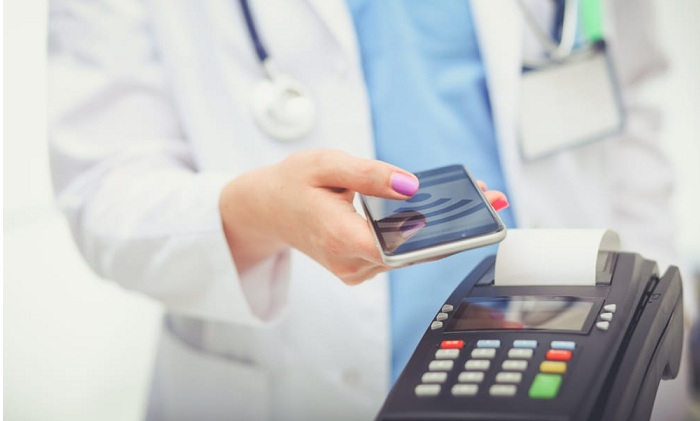Having a customer’s credit card on file or being able to take payments online is a common practice for many retailers. But increased adoption by healthcare providers of such basic processes during the pandemic has marked a huge step forward for an industry that’s focused on delivering care, Rectangle Health Chief Technology Officer Mike Peluso told PYMNTS recently.
“From a digital payment perspective, [COVID-19] has almost helped healthcare in that it’s allowed them to incorporate new payment methods [and] new collection methods that occur outside of the office,” Peluso said in an interview.
Like most businesses, healthcare payments came to a screeching halt in March — but they have since bounced back. Peluso noted that the pandemic “has not only given birth to something like telehealth, but it also gave birth to payment options” like enabling patients to pay outside of the office, pay digitally via text, leave a card on file or adopt payment plans.
The pandemic has changed the way patients think, too. Peluso said that patients’ primary concern these days is: “Is it safe to visit the doctor’s office?” Because practices have reduced person-to-person contact, collecting a patient’s payment within the office, whether it’s a copay or a deductible, becomes even more of a challenge.
A Long Struggle To Modernize
U.S. patients have historically paid at least part of their medical bills within the office at the point of care, and Peluso said the industry has struggled to move past that model.
But even though the pandemic has caused sharply higher U.S. unemployment rates and economic uncertainty, he said those factors haven’t really changed things within the practices and providers that Rectangle Health serves.
“Whether it’s a good or a bad economy, whether unemployment is high or low, patient out-of-pocket costs for medical and dental services have gone up every year for easily the past 20 [to] 30 years,” he noted.
But one thing that hasn’t increased commensurately is providers’ abilities to collect the money that’s due to them.
“The amount of money that patients are paying for services continues to go up, and the ability of providers to collect that money needs to keep pace,” Peluso explained. “It can’t just be payment at the point of care, or ‘we’ll send you a bill and you can pay later.’ The payment capability — and the payment technology — has to keep pace.”
While the broad U.S. healthcare system accounts for one-quarter of the total economy and is the source of much debate and concern, medical providers are actually only a small part of that much larger pie. Peluso said they’re best served by focusing on what they can control.
“Providers can’t solve the $4 trillion healthcare expenditure problem,” he said. “But providers can solve their own patient payment-collection problem by utilizing [modern payment] tools.”
Consumer-Friendly Tools Improve The Patient Experience
Peluso said that healthcare organizations must leverage technology — for both their own sake and their patients’ sake — in a world where it’s easy to buy things on Amazon or connect with a nearby driver via Uber.
“Healthcare providers need to be using that type of technology,” he said. “If they do, they’ll generally create better patient care.”
Healthcare Is a Different Model
But unlike retail businesses that focus on getting paid and generating revenue, Peluso noted that healthcare providers are a different animal. Unlike retail stores, they focus on providing quality care and keeping patients alive and well.
Offering credit or other consumption drivers like buy now, pay later (BNPL) might resonate with certain elective surgical and cosmetic dental procedures. However, these do not apply to standard healthcare services, such as routine dental cleanings, annual check-ups or preventative screenings.
As providers continue to deliver high-quality care, making it easier to pay for services enhances the overall patient experience. Peluso believes providers could benefit by offering patients digital options like card on file, recurring payments or online payments, rather than trying to embrace payment models that are suited for retail or eCommerce transactions.
Headwinds And Tailwinds
As much as COVID-19 has driven all forms of digital commerce forward, that momentum will likely continue in the healthcare industry next year and beyond, even if the pandemic wanes. Contactless solutions — from remote patient engagements to touchless digital payments — are here to stay. But at the same time, Peluso said the biggest industry obstacle will continue to be getting providers to embrace something different.
“It’s a big switch for a provider, a medical office, a dental office or even a hospital,” Peluso said. “So, working through that switch will be the big challenge over the next 12 months — and even longer.”


















